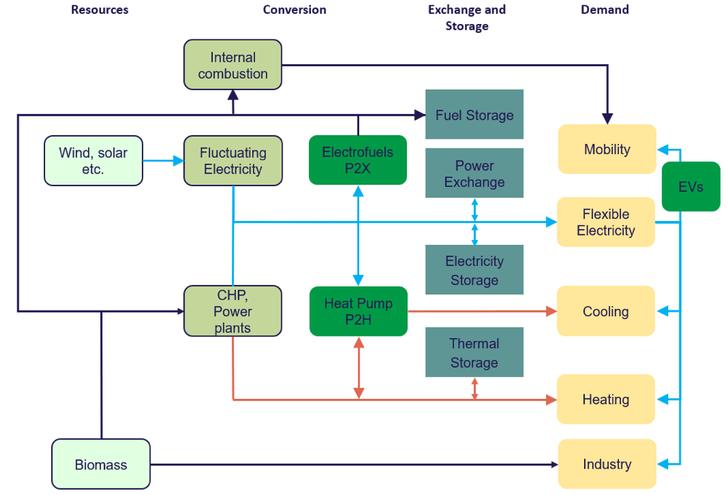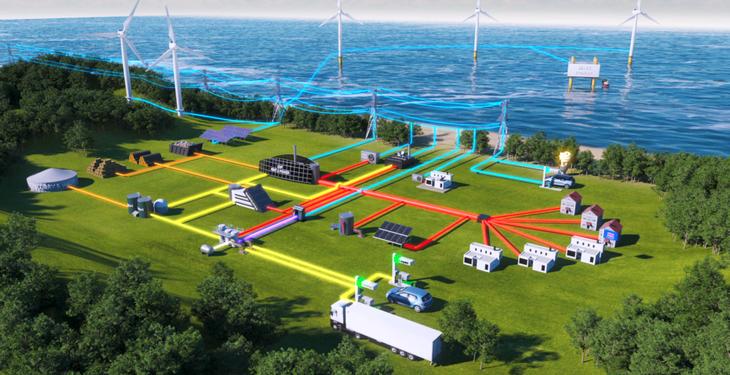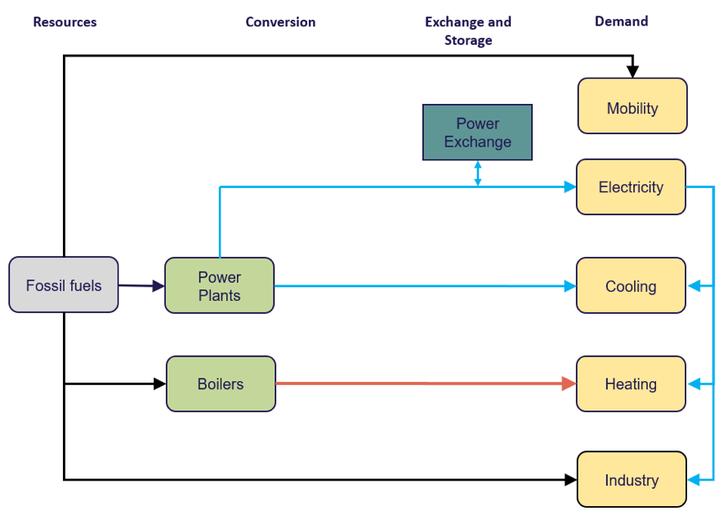A 100% renewable energy system is feasible, says Andrei David Korberg, a doctoral student in the sustainable energy planning group at Aalborg University in Denmark. In an article published by www.infoclima.ro he exposes a model of 100% renewable energy system that we can build using mostly existing technologies. This is a very short summary, for the full article go HERE (in Romanian)!
Step 1 – Integration of intermittent renewable energy (0-25%)
The first step is to invest in renewable energy produced by wind turbines or photovoltaic panels. With this measure, we could replace up to about 25% of the total fuel used without making any other changes in the energy system, practically reducing the costs for fossil fuels.
Step 2 – District heating, cogeneration and thermal energy storage (0-25%)
Heating buildings in the European Union is the activity with the highest energy consumption. To increase efficiency we need 2 technologies: district heating systems and cogeneration plants that can operate efficiently and flexibly together with renewable energy.
Step 3 – Heat Pumps or Power-to-Heat (25-40%)
To integrate more intermittent renewable energy we need solutions to transform electricity into thermal energy (solutions called Power-to-Heat). We can do this with high efficiency using heat pumps in district heating systems.
There are also small heat pumps that operate on the same principle and can be used in suburban locations, where district heating systems are not feasible.
Step 4 – Electrification of transport (40-65%)
Electric vehicles will be an integral part of the energy system, not just the transportation system, because by electrifying transportation we can integrate even more intermittent renewable energy by replacing gasoline or diesel. Most of the transport can be electrified, starting from personal vehicles, to light vehicles (trucks, vans), part of the transport of heavy tonnage (trucks, buses) to the railway.
Step 5 – “Electrofuels” or Power-to-X (65-85%)
However, there are still some transport solutions that are not suitable for electrification. These are long-distance shipping, long-distance road transport, heavy equipment and last but not least, air transport. For these there is the solution of so-called “electrofuels”.
Electrofuels can be very similar to the gasoline, diesel or kerosene in aviation used today, and for the most part, they can be used in the same internal combustion engines we use today. Unlike biofuels, which are produced exclusively from biomass, electrofuels are produced from hydrogen and a carbon source. Another advantage of these types of fuels is that they use less biomass than biofuels or not at all, practically reducing the pressure on this limited resource.
Step 6 – Disposal of other fossil fuels (85-100%)
After the measures in the thermal and transport sector, there is still the industrial sector and the power and cogeneration plants that still use fossil fuels. This step is also the most difficult, although it represents only 15% of the fossil fuels used in the energy system.
For industry, solutions are diversified, from electrification to hydrogen, biogas or electromethane, depending on industrial processes. Not all are suitable for electrification, for some liquid or gaseous fuels are still needed. This makes this step the most difficult, due to the different needs of the industry and the different solutions.

“An energy system can become renewable using both intermittent and flexible sources, such as biomass,” says Andrei David Korberg. “Steps 1 to 4 can be considered easier to implement, because they involve technologies that are already very familiar to us. The last two steps have a higher degree of complexity, but they are still possible. All these steps can make a significant contribution to reducing carbon emissions in line with the European Union’s ambitions and are essential to achieving a 100% renewable system at the lowest possible cost. As investments in energy infrastructure have a long lifespan, the decisions and technologies implemented today will accompany us in the next 30-50 years. ”

